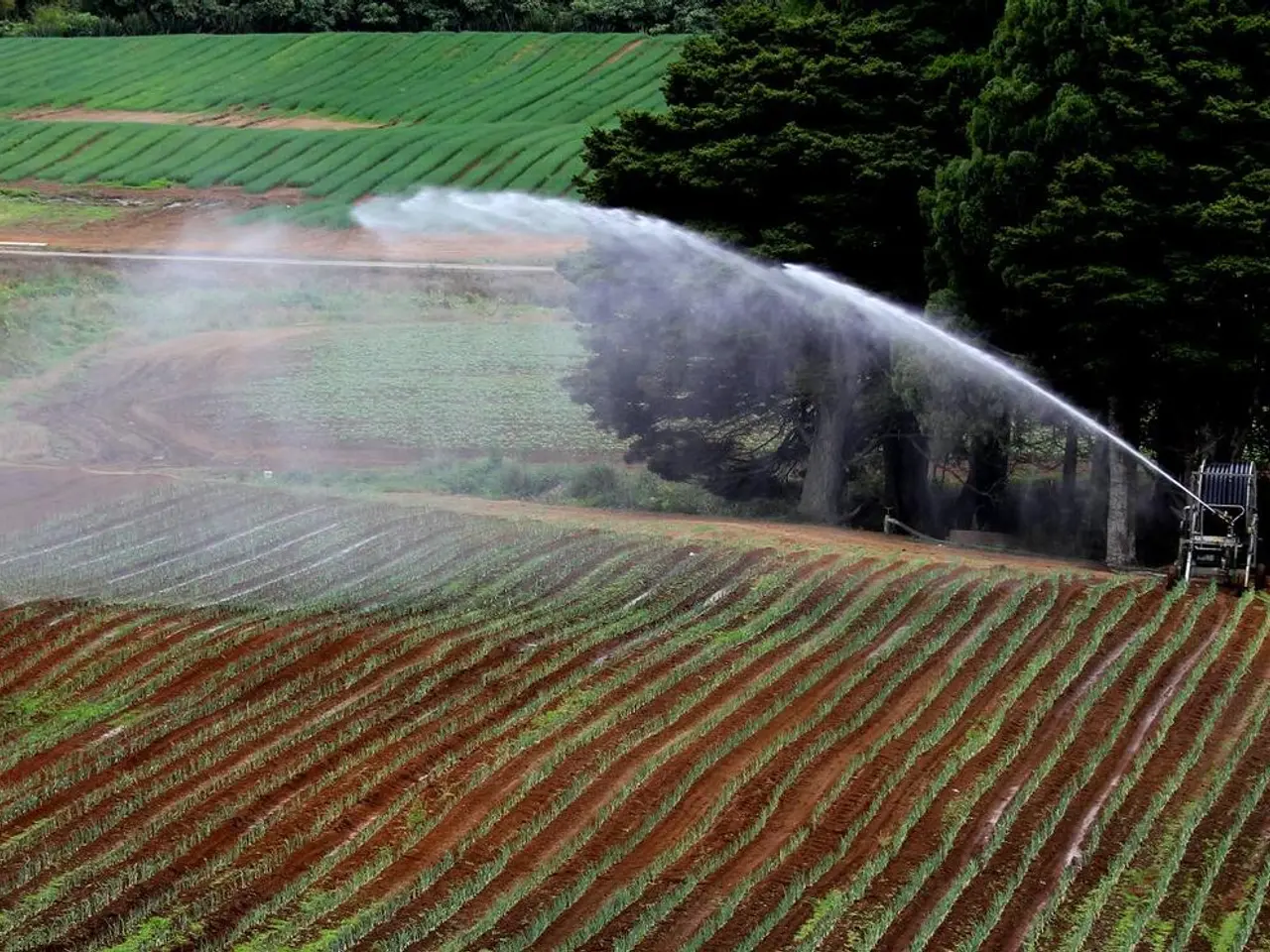"Heightened environmental factors fueling fire hazard"
Europe Witnesses a Dramatic Increase in Wildfires
A significant surge in wildfires has been reported across the European Union (EU) in the year 2025, compared to the same period in 2024. The Forest Fire Information System, part of the Copernicus Emergency Management Service, has detected 1,599 wildfires in the EU as of mid-August, an increase of 448 from the 1,089 fires recorded in the same period of 2024.
The total burned area in the EU has more than doubled, reaching 409,220 hectares by mid-August 2025, compared to 188,995 hectares in the same period of 2024. This increase in burned area is approximately double the amount burned at the start of the year. As of now, the total area burned in the EU since the beginning of the year stands at 353,862 hectares.
The rise in wildfires has also led to a significant increase in CO2 emissions. Estimates suggest that emissions caused by wildfires have climbed to an estimated 13.47 million tonnes in 2025, up from 9.59 million tonnes for the same period in 2024.
The information about these fires was cited by the Spanish news agency EFE. In 2024, the burned area across the EU was about 1,000 km² (roughly 100,000 hectares), with Portugal, Bulgaria, and Spain among the worst affected countries. Portugal alone saw nearly 450 km² burned in 2024.
The fire season in 2025 has already broken previous records for burned hectares and fire frequency, despite increased EU funding directed at fire prevention and management. The current wildfire risk in the EU, as indicated by the Wildfire Climate Index, extends until August 12.
Climate factors, vegetation dryness, and fire danger forecasts are the major causes behind this increase. 2024 was Europe’s hottest year on record since 1940, with continuing heatwaves and droughts in 2025 driving extreme fire weather conditions across the continent. Extended periods of hot, dry weather have produced highly flammable vegetation in Mediterranean and central European forests and grasslands. Fire danger forecasts show extreme to very extreme conditions in large parts of Europe.
The impacts of these wildfires are widespread. They have led to widespread evacuations and disruption of tourism in affected countries like Spain, Portugal, Greece, and France. They have also increased strain on power grids due to heat stress and higher cooling demands, along with worsening air quality because of smoke and ozone increases. Moreover, they have caused damage to biodiversity-rich habitats and elevated fire-related CO2 emissions that impede ecosystem recovery.
In summary, the sharp increase in wildfires from 2024 to 2025 across Europe is chiefly the result of intense heatwaves, drought conditions, and climate change–driven weather extremes that have created more frequent and severe fire events, especially in southern and central European countries.
- The surge in wildfires, accompanied by increased CO2 emissions, has raised concerns in the realm of environmental science, where experts are scrutinizing the impact of climate change on weather patterns.
- As wildfires continue to rage across Europe, affecting countries such as Spain, Portugal, Greece, and France, the importance of studying environmental science, including the effects of climate change on wildfires, has become even more crucial.







